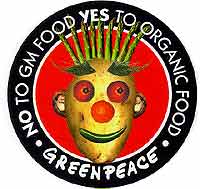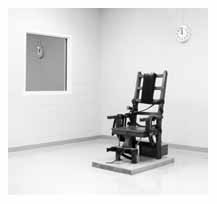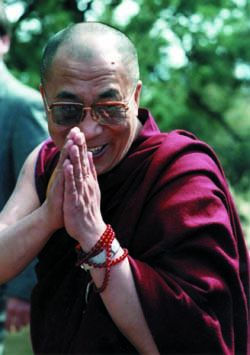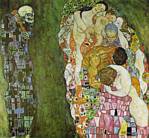1.24 What is a gene?
What does genetic engineering typically involve?
There are some consequentialist arguments (by consequentialist arguments we mean arguments
that suggest that an action is not bad in itself but is bad because of certain unwanted consequences
that flow from the action) raised against genetic engineering.
1.25 What is in vitro fertilisation?
What is an embryo transfer?
1.26 Some consequentialist questions include:
- How can biotechnology assist (help) human beings?
- Is biotechnology safe?
- Does biotechnology lead to animal suffering?
- What are the ecological consequences of biotechnology?
1.27 There are also intrinsic arguments (by intrinsic we mean arguments that suggest that an
action is wrong in itself regardless of consequences)raised against genetic engineering.
- Is biotechnology unnatural?
- Is biotechnology blaspemous?
- Does biotechnology in tale of this respect for organisms?
There is also be difficult question of patenting.
There is a danger that biotechnology made lead to the patenting of is alive.
1.36 What advantages in genetic engineering research are described?
For example, genetic medicine can lead to improvements in diagnosis, treatment, and prevention of
diseases. Vaccines and drugs for diseases may be found for diseases thought to be incurable such as
cancer and AIDS.
What disadvantages connected with genetic engineering have been described?
The disadvantages are connected with many of the alleged benefits of genetic engineering.
These disadvantages include expense, the dangers associated with the genetic altering of plants and
animals, and the potential injustice and economic inequality associated with a world "gene gap".
We looked at the advantages and disadvantages of genetic engineering (1.36-37) and then focused on the
central notion of unnaturalness because this word keeps coming up: we talked about unnaturalness when we studied
assisted reproductive technologies (unnaturalness is a criticism of I.V.F. and A.R.T.) and which we see used
again unnaturalness is a criticism of genetic engineering.
人工的 【じんこうてき】 (adj-na) ⇒ artificial; unnatural
人為的 【じんいてき】 (adj-na) ⇒ artificial; unnatural
不自然 【ふしぜん】 (adj-na,n)⇒ unnatural; artificial; affected; strained
See p.1.38
Read about the German Enquete Commission (p. 1.38) and the 3 aims of the
Commission:
- define the natural as opposed to the unnatural
- give reasons why we prefer the natural over the unnatural
- divide the different kinds of biotechnology according to their
natural or unnatural characteristics.
1.38 We will spend some time discussing the argument against genetic engineering that relates to
unnaturalness
Explain what is meant by the teleological view in ethics?
What conclusions did the German Enquete Commission come to?
What restrictions did the Enquete Commission think should be placed on the use of genetic
engineering?
How can some of the conclusions reached by the Enquete Commission be criticised?
1.41 Explain what is meant by the argument of "playing God"?

TASK
|
1 What three questions did the Enquete Commission ask itself?
2 What definition does the Enquete Commission give to the word natural ?
3 What biotechnology does the Enquete Commission think should be "questioned"?
4 What biotechnology does the Enquete Commission think should be "banned"?
5 Do you think cloning is an "unnatural manufacturing of people"?
6 What does risk mean?
7 Is risk a positive thing sometimes?
8 Does genetic engineering expose humans to a special kind of "unacceptable risk"?
|
1.43 Spend some time and think about the concept of risk and how the concept of risk is used
in economics and in ethics. What level of risk should we except in the field of genetic engineering?

1.44 Includes a discussion on the morality of risk taking.
1.45 Read Meilaender's paper: what, in your own words, troubles the writer about human cloning?
Why does Meilaender stress the importance of love and marriage in respect of begetting
(or having) children?
Explain what is meant by the expression "human dignity"? Why is this expression so
difficult to talk about? Why is this concept of human dignity so important?

TASK
|
1 What is ART? Give 2 examples.
2 What is IVF?
3 What kinds of ethical problems are created by ART? Give some examples.
4 What do you think should happen to the stored embryo in Difficult Case 1? (p.1.21)
5 What do you think should happen to the stored embryo in Difficult Case 2? (p.1.21)
6 Which of the above 2 cases is more "natural and loving" and which is more
"dehumanizing"?
|
Euthanasia & the Right to Die (Course Packet 1.48 - 1.67)
1.49-1.51 transcript from a Cokie Roberts ABC News: Nightline program.
Notice that euthanasia (like abortion) is a very controversial issue.

On 13 April l999 retired pathologist Dr. Jack Kevorkian was sentenced in Michigan, USA, to two
terms of imprisonment for helping a Mr.Youk suffering from ALS to die. For the 2nd degree murder of
Thomas Youk he received a sentence of 10-25 years and for using a "controlled substance"
(lethal drug) he was given 3-7 years jail, the sentences to run concurrently. The 70-year-old
doctor, who is currently in prison, has said he will appeal to higher courts.
The case achieved enormous notoriety, not only for Dr.Kevorkian's publicly acknowledging that he
had already helped at least 130 other people to die by assisted suicide, but Mr.Youk's death in
September l998 was by direct injection (voluntary euthanasia). When the law enforcement authorities
in Michigan did not move to charge Kevorkian with killing Mr.Youk, he took a tape of the incident
to CBS Television, which aired it in the widely watched news program 60 Minutes. On the program
Kevorkian challenged prosecutors to act: three days later Kevorkian was charged with the offences.
|
1.57 What does euthanasia mean?
1.52 Note that euthanasia means "a good death" or "dying well". But, what is a good death?
Explain the differences between:
- active and passive euthanasia?
- voluntary and involuntary euthanasia?
- assisted and unassisted euthanasia?
Explain these arguments:
- compassion for suffering
- sanctity of life
- right to die
- slippery slope
1.57 Read the section that answers the question "what is euthanasia?" very carefully.
Note the excellent discussion of the differences between involuntary and from involuntary
euthanasia and between active and passive euthanasia.
1.64 Read the arguments in favour of euthanasia:
- Respect for autonomy
- Mercies
- Utilitarian
1.66 Read the arguments against euthanasia:
- Life years inherently valuable
- Need to give benefit of the doubt of
- Slippery slope argument
1.67 Important to note that it is one thing to argue in support of euthanasia but it is
quite another (and much more difficult thing) to argue for the legalisation of euthanasia.
Capital Punishment (Course Packet 1.68 - 1.105)

In this part I will take the meanings of "death penalty" and "capital punishment" as the same.
Read the extract below from Dead Man Walking: An Eyewitness Account of the Death Penalty in the
United States by Sister Helen Prejean, pp. 5-6.

I came to St. Thomas as part of a reform movement in the Catholic Church, seeking to harness
religious faith to social justice. In 1971, the worldwide synod of bishops had declared justice a
"constitutive" part of the Christian gospel. When you dig way back into Church teachings, you find
that this focus on justice has been tucked in there all along in "social encyclicals." .... The
documents have been called the best-kept secret of the Catholic Church. And with good reason.
The mandate to practice social justice is unsettling because taking on the struggles of the poor
invariably means challenging the wealthy and those who serve their interests.
In 1980 my religious community, the Sisters of St. Joseph of Medaille, had made a commitment to
"stand on the side of the poor," and I had assented, but reluctantly. I resisted this recasting of
the faith of my childhood, where what counted was a personal relationship with God, inner peace,
kindness to others, and heaven when this life was done. I didn't want to struggle with politics and
economics. We were nuns, after all, not social workers, and some realities in life were, for better
or worse, rather fixed-like the gap between rich and poor. Even Jesus Christ himself had said, "The
poor you will always have with you." Besides, it was all so complex and confusing - the mess the
world was in - with one social problem meshed with other problems. If you tried to get a handle, say,
on improving housing for poor people, you found yourself in a morass of bureaucracy and waste in
government programs, racist real estate and banking policies, unemployment-a mess.

Enlightenment had come in June 1980. I can remember the moment because it changed my life. My
community had assembled at Terre Haute, Indiana, to grapple with directions of our ministries for
the 1980s, and the chief speaker was Sister Marie Augusta Neal, S.N.D.deN. A sociologist, she
described glaring inequities in the world: two thirds of the peoples of the world live at or below
subsistence level while one third live in affluence. Did we know, she asked, that the United
States, which comprises about 6 percent of the world's population, consumed 48 percent of the
world's goods? What were we to do about such glaring injustices? She knew her facts and I found
myself mentally pitting my arguments against her challenge-we were nuns, not social workers, not
political. But it's as if she knew what I was thinking. She pointed out that to claim to be
apolitical or neutral in the face of such injustices would be, in actuality, to uphold the status
quo-a very political position to take, and on the side of the oppressors.
But it was the way she presented the message of Jesus that caused the most radical shift in my
perspective. "The Gospels record that Jesus preached good news to the poor," she said, "and an
essential part of that good news was that they were to be poor no longer." ... And Jesus' challenge
to the nonpoor, she emphasized, was to relinquish their affluence and to share their resources with
the dispossessed.
Something in me must have been building toward this moment because there was a flash and
I realized that my spiritual life had been too ethereal, too disconnected.
I left the meeting and began seeking out the poor. This brought me one year later to the St. Thomas
housing development.
Copyright 1994 by Sister Helen Prejean
|
1.69-1.72 transcript from a Ted Koppel ABC News: Nightline program.
Notice Koppel's question to Death Row inmate Jesse Jacobs bottom p. 1.70 and Jacob's answer.
1.73 The 2 main arguments for the death penalty are retribution and deterrence.
The idea of retribution is a very old one. It is often said to be a "law of nature": a life for a
life - and an eye for an eye"
The deterrence arguement is that the death penalty is necessary to stop people committing crimes.
Arguments against the death penalty includes arguments about the sanctity of alive (often also used
in the anti-abortion debate), the hope of reform in the wrongdoer, is that the death penalty
establishes a climate of brutalisation, that the death penalty does not deter crime
that executions are inhuman, prejudicial in that it effects certain races and
classes more than others, and that the legal system makes mistakes.
1.77 Read the definition of capital punishment at the start of this reading. Notice that it
is defined in 3 parts as the practice of:
-
putting offenders to death
-
under the authority of the law
-
as punishment for crimes.
Does the death penalty have a long history?
Has the death penalty been repealed (abolished) in much of Europe?
How appropriate is the use of the death penalty in a modern society?
Be careful to distinguish capital punishment (the death penalty)from corporal (physical) punishment.
1.78 Notice the religious arguments and the division within Christian and other religious thought concerning the
death penalty. Many Jews and Christians favouring the death penalty point out the many
capital crimes endorsed in the Old Testament. God declares to Noah: "Whosoever sheds man's blood
by man shall his blood be shed"
Other Christians oppose the death penalty and point out the passage in the Bible where exile rather
than death was used to punish the "first murderer" Cain. These Christians also mention Jesus's
defence of a woman in which he invites those "without sin among you" to throw the first stone
(John 8: 3-7)
Secular (non-religious) arguments are quite different. Some argue that all persons have a
natural human right to live.
Others argue that the right to live is not absolute and that it is only a presumption which can be
negated by an individual's actions. This was John Locke's argument in his Second Treatise of
Civil Government - that a person's right to life can be forfeited.

1.79 Notice that Kant argues that murderers must die because otherwise there is no equality
between the crime and the retribution. Notice the principle of proportionality between crime and
punishment that is called for here.
1.81 Notice Jeremy Bentham's arguments against the death penalty. He said that the death penalty
lacks frugality (it is expensive) remissability (it cannot be "undone") profitability (it does not improve
life for anyone - see the Dalai Lama's ideas) and equability (it is not fair) when compared with
imprisonment.
Notice also that studies tend to show that the reintroducing of the death penalty in the United
States was not usually followed by lower rates of capital crimes.
Notice the study that has shown that 4 out of 558 death row prisoners have been shown to be
innocent.
1.84 Notice the United States Constitution and international human rights law that prohibit "cruel
and unusual punishment".
1.85 Read the paper on capital punishment written by Reverends O'Keefe and Costello. Are
they for capital punishment or are they against capital punishment? What do you think are their
main arguments?
1.87 Read Hugo Adam Bedau's case against the death penalty. Summarise his arguments. Do
you agree with him?
1.98 Read the paper written by the 14th Dalai Lama (Tenzin Gyatso).

Why is the Dalai Lama opposed to the death penalty? What does the Dalai Lama think we should do?
Explain his desire to reduce "negative thoughts" and what he thinks about the harm caused by the death penalty.
Why does he think we have become "misguided"?
1.104 Read what Sister Helen Prejean says in chapter 6 of Dead Man Walking.
Explain why she, for religious reasons, cannot accept the death penalty.










